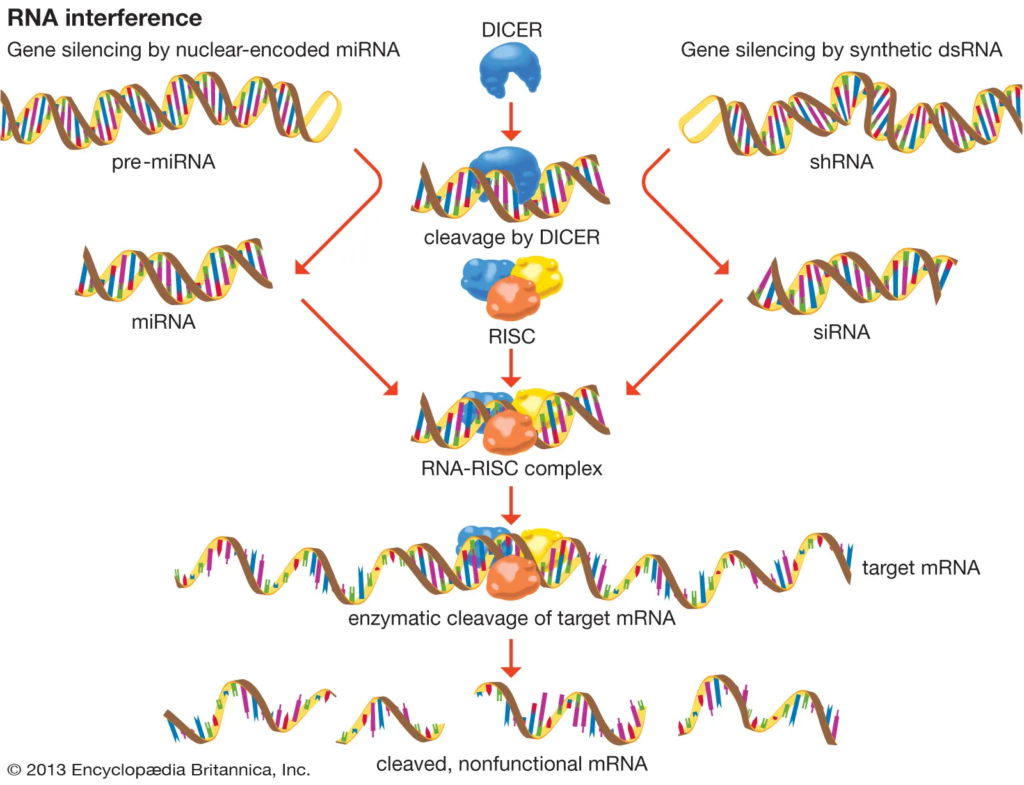
In the ever-evolving landscape of biotechnology, RNA interference (RNAi) has emerged as a groundbreaking mechanism for regulating gene expression. This powerful tool has captivated the scientific community with its potential applications in medicine, agriculture, and beyond. In this article, we will delve into the world of RNA interference biotechnology, exploring its fundamentals, applications, and the exciting possibilities it offers for the future.
UNDERSTANDING THE BASICS OF RNA INTERFERENCE
What is RNA Interference?
RNA interference, often abbreviated as RNAi, is a natural cellular process that plays a pivotal role in gene regulation. It involves the silencing of specific genes by interfering with the messenger RNA (mRNA) molecules that carry instructions for protein synthesis.
How Does RNAi Work?
RNAi operates through small RNA molecules, including small interfering RNAs (siRNAs) and microRNAs (miRNAs). These molecules bind to target mRNA, preventing its translation into proteins. This intricate process effectively “silences” the gene, influencing the traits and functions associated with it.
The Key Players: siRNAs and miRNAs
SiRNAs are synthetic or exogenously introduced RNA molecules that can be designed to target and silence specific genes of interest. MiRNAs, on the other hand, are endogenous molecules that naturally regulate gene expression.
APPLICATIONS OF RNA INTERFERENCE BIOTECHNOLOGY
RNA interference has opened the door to a multitude of applications across various fields. Let’s explore some of the most promising ones:
1. Therapeutic Breakthroughs
RNAi-based therapies hold immense promise for treating genetic disorders, viral infections, and even certain types of cancer. By selectively silencing disease-causing genes, RNAi can potentially revolutionize the way we approach healthcare.
2. Agricultural Advancements
In agriculture, RNAi can be used to develop crops with enhanced resistance to pests and diseases. This environmentally friendly approach reduces the need for harmful pesticides, ensuring a more sustainable food production system.
3. Functional Genomics
RNA interference is an invaluable tool for understanding gene function. Scientists can use it to systematically study the role of individual genes, shedding light on their contributions to various biological processes.
4. Drug Discovery
Pharmaceutical researchers are harnessing RNAi to identify potential drug targets and screen for compounds that can modulate gene expression. This accelerates the drug discovery process and may lead to the development of novel treatments.
5. Gene Therapy
RNAi can be employed in gene therapy to correct or modulate gene expression in patients with genetic diseases. This offers hope for individuals suffering from conditions that were once considered incurable.
CHALLENGES AND FUTURE PROSPECTS
While RNA interference biotechnology holds immense potential, it is not without its challenges. Off-target effects, delivery methods, and the potential for unintended consequences must be carefully addressed. However, ongoing research and technological advancements continue to overcome these hurdles.
As we look to the future, RNAi is poised to play a transformative role in personalized medicine, agriculture, and the broader biotechnological landscape. Its ability to precisely manipulate gene expression offers a glimpse into a world where previously untreatable diseases can be conquered, and agricultural sustainability can be enhanced.
CONCLUSION
RNA interference biotechnology is a remarkable scientific advancement that has the potential to reshape our world. From curing genetic diseases to improving crop yields, its applications are far-reaching and hold the promise of a brighter future. As researchers and innovators continue to unlock its secrets, we can anticipate a new era in biotechnology, where the power to control genes is in our hands.
